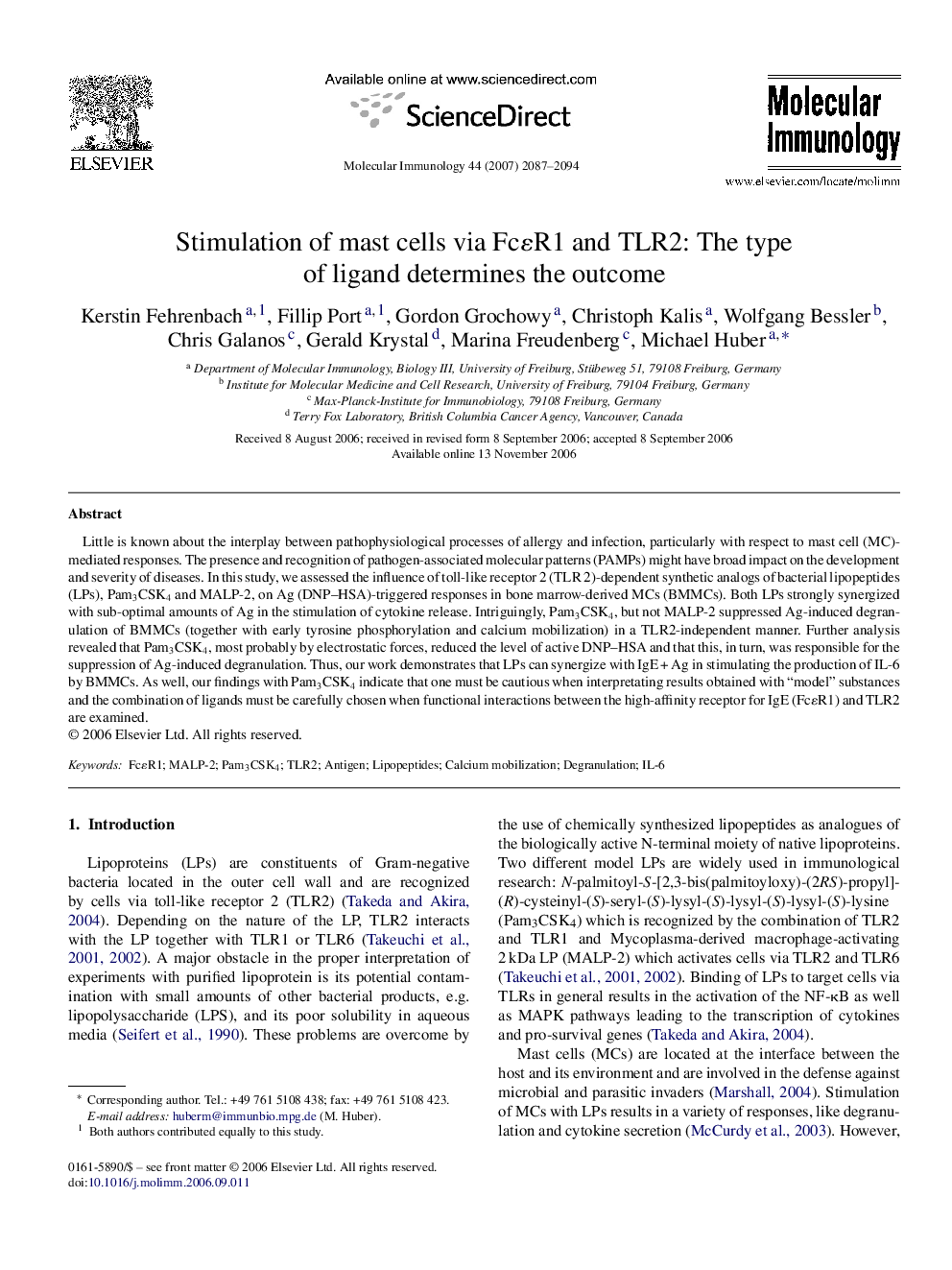| Article ID | Journal | Published Year | Pages | File Type |
|---|---|---|---|---|
| 2833405 | Molecular Immunology | 2007 | 8 Pages |
Little is known about the interplay between pathophysiological processes of allergy and infection, particularly with respect to mast cell (MC)-mediated responses. The presence and recognition of pathogen-associated molecular patterns (PAMPs) might have broad impact on the development and severity of diseases. In this study, we assessed the influence of toll-like receptor 2 (TLR 2)-dependent synthetic analogs of bacterial lipopeptides (LPs), Pam3CSK4 and MALP-2, on Ag (DNP–HSA)-triggered responses in bone marrow-derived MCs (BMMCs). Both LPs strongly synergized with sub-optimal amounts of Ag in the stimulation of cytokine release. Intriguingly, Pam3CSK4, but not MALP-2 suppressed Ag-induced degranulation of BMMCs (together with early tyrosine phosphorylation and calcium mobilization) in a TLR2-independent manner. Further analysis revealed that Pam3CSK4, most probably by electrostatic forces, reduced the level of active DNP–HSA and that this, in turn, was responsible for the suppression of Ag-induced degranulation. Thus, our work demonstrates that LPs can synergize with IgE + Ag in stimulating the production of IL-6 by BMMCs. As well, our findings with Pam3CSK4 indicate that one must be cautious when interpretating results obtained with “model” substances and the combination of ligands must be carefully chosen when functional interactions between the high-affinity receptor for IgE (FcɛR1) and TLR2 are examined.
